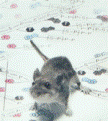Papers in the Biological Sciences

Jay F. Storz Publications
Document Type
Article
Date of this Version
11-2012
Citation
Published in Journal of Biological Chemistry 287:45 (November 2, 2012), pp. 37647-37658; doi: 10.1074/jbc.M112.375600
Abstract
The majority of bird species co-express two functionally distinct hemoglobin (Hb) isoforms in definitive erythrocytes as follows: HbA (the major adult Hb isoform, with α-chain subunits encoded by the αA-globin gene) and HbD (the minor adult Hb isoform, with α-chain subunits encoded by the αD-globin gene). The αD-globin gene originated via tandem duplication of an embryonic α-like globin gene in the stem lineage of tetrapod vertebrates, which suggests the possibility that functional differentiation between the HbA and HbD isoforms may be attributable to a retained ancestral character state in HbD that harkens back to a primordial, embryonic function. To investigate this possibility, we conducted a combined analysis of protein biochemistry and sequence evolution to characterize the structural and functional basis of Hb isoform differentiation in birds. Functional experiments involving purified HbA and HbD isoforms from 11 different bird species revealed that HbD is characterized by a consistently higher O2 affinity in the presence of allosteric effectors such as organic phosphates and Cl− ions. In the case of both HbA and HbD, analyses of oxygenation properties under the two-state Monod-Wyman-Changeux allosteric model revealed that the pH dependence of Hb-O2 affinity stems primarily from changes in the O2 association constant of deoxy (T-state)-Hb. Ancestral sequence reconstructions revealed that the amino acid substitutions that distinguish the adult-expressed Hb isoforms are not attributable to the retention of an ancestral (pre-duplication) character state in the αD-globin gene that is shared with the embryonic α-like globin gene.
Includes supplemental tables & references.


Comments
Copyright © 2012 The American Society for Biochemistry and Molecular Biology, Inc. Used by permission.